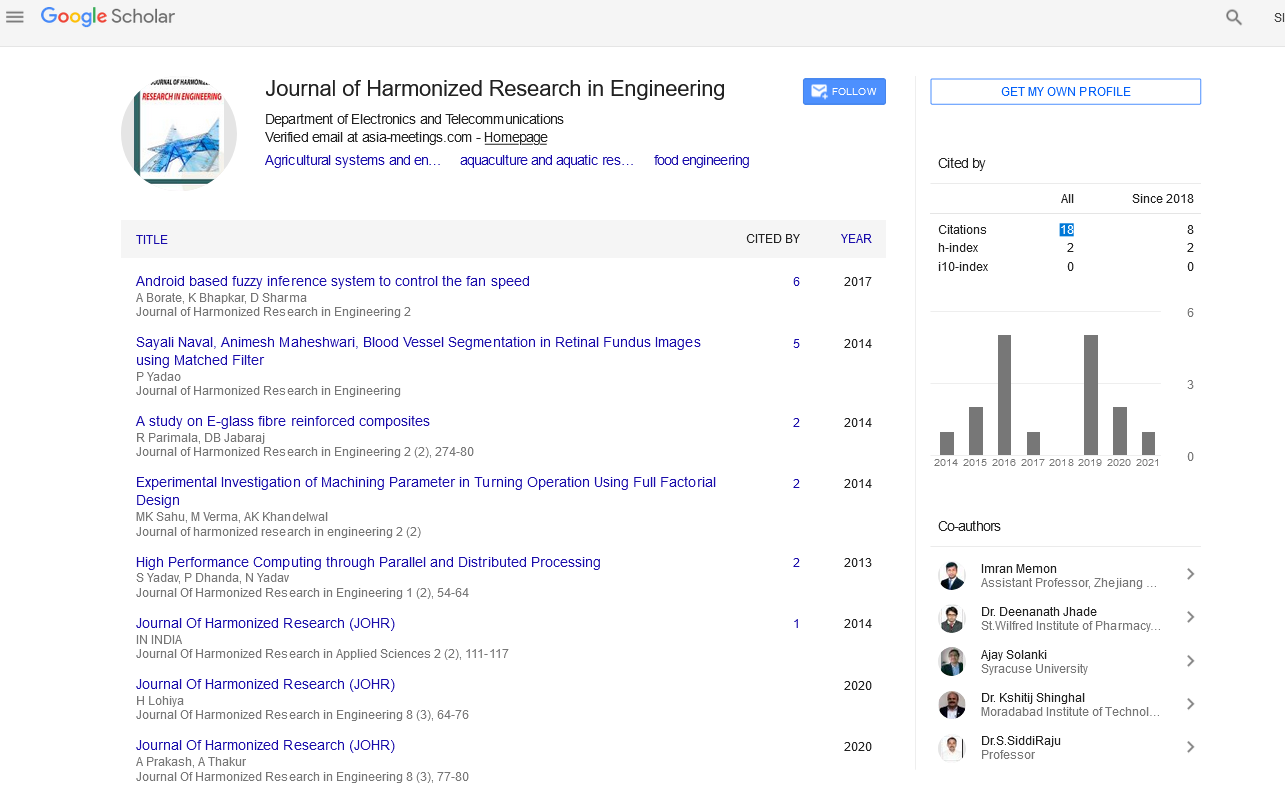Perspective - (2022) Volume 10, Issue 4
APPLICATIONS FOR MATHEMATICAL AND NUMERICAL ANALYSIS USING 3D ENGINEERING
Cassiano Souza*Received: Nov 01, 2022, Manuscript No. JHRE-22-85081; Editor assigned: Nov 04, 2022, Pre QC No. JHRE-22-85081 (PQ); Reviewed: Nov 18, 2022, QC No. JHRE-22-85081; Revised: Nov 25, 2022, Manuscript No. JHRE-22-85081 (R); Published: Dec 05, 2022, DOI: 10.30876/2347-7393.22.10.209
Description
The material cloud method (MCM), an innovative method for topology optimization, has just been created. A fixed backdrop finite element mesh can be used for the numerical analysis in MCM, enhances the natural can be created by adjusting the sizes and areas of material clouds, which are resource patches with discrete sizes and consistent densities. Only active items that contain several material clouds are handled throughout the optimization process. With MCM, a design domain expansion- reduction technique can be organically achieved through motions of material clouds, enabling the discovery of a true optimal solution without any appreciable increase in computational costs. In order to demonstrate the mathematical rigour of this novel approach, we outline the MCM notion in this paper and demonstrate the presence of optimal solution(s) in the formulation of MCM. To demonstrate the generality of this approach, we provide design examples for 3D engineering design issues.
Innovative work Topology optimization theory, methodologies, and applications have all been thoroughly investigated. This method has gained popularity and been successfully used in industrial design. Novel endeavours the theory, techniques, and applications of topology optimization have all been well studied. This method has become widespread and has been successfully used in industrial design. Due to its simplicity and good compatibility with FEM, the traditional density- based approach has been the most widely used for topology optimization. However, this approach has some drawbacks, such as checkerboard patterns and mesh dependence, which have a significant impact on the computational outcomes. The density- based approach’s ability to produce the best results for a particular design area is also another significant complexity to be aware of. The size and geometry of the design area, then, affects the outcome that is obtained as the ideal. The discovered topology might not be the one that is actually optimum in this respect.
Recently, a number of new topology optimization strategies have emerged in an effort to get around some issues that standard density approaches or the density distribution method run into when being applied (DDM). A level set method is the first. This method avoids the appearance of the checkerboard pattern by introducing a level set function or implicit function to identify the material domain. Element connectivity parameterization (ECP) is the second process. This method maintains the solidity of all finite elements throughout the optimization process and introduces zero- length elastic linkages to parameterize inter-element connectivity. The issues of geometrically nonlinear topology optimization can be solved reasonably well. During the topology optimization process, the design domain or design space is expanded and contracted. The design domain is fixed in the initial definition of the traditional density-based approach (DDM), and all elements within it must be treated. Elements outside of the initial design domain cannot be treated in addition, regardless of the values of the design variables throughout the optimization process. A better optimal design can be obtained with lower computational costs if the design domain or design space can be updated adaptively relying on certain input throughout the design phase.
A design space is element-by-element reduced or expanded using the evolutionary structural optimization (ESO) method. Metamorphic development (MD) is a method that involves developing a structure in a metamorphic way as the optimization process moves forward. The design space is simultaneously optimised with the design variables in the conventional density-based approach, according to a technique for design space optimization. According to the application problem, the criteria used to determine whether a certain piece should be added or excluded are arbitrary in the aforementioned research projects to change the design domain or design space. On the other hand, calculating the data connected to the criteria requires additional calculation at rather high prices.

Google Scholar citation report
Citations : 43
Journal of Harmonized Research in Engineering received 43 citations as per google scholar report









